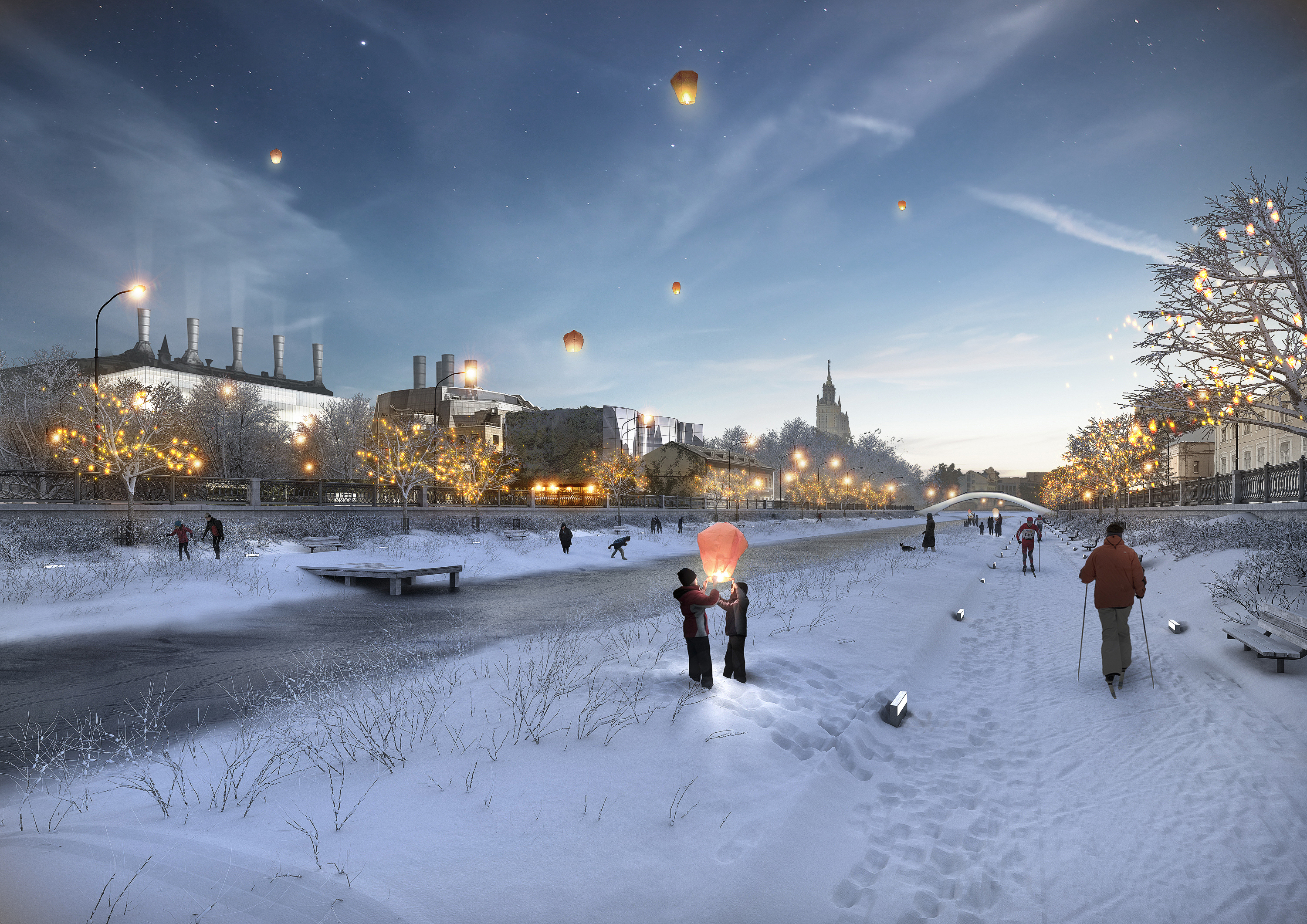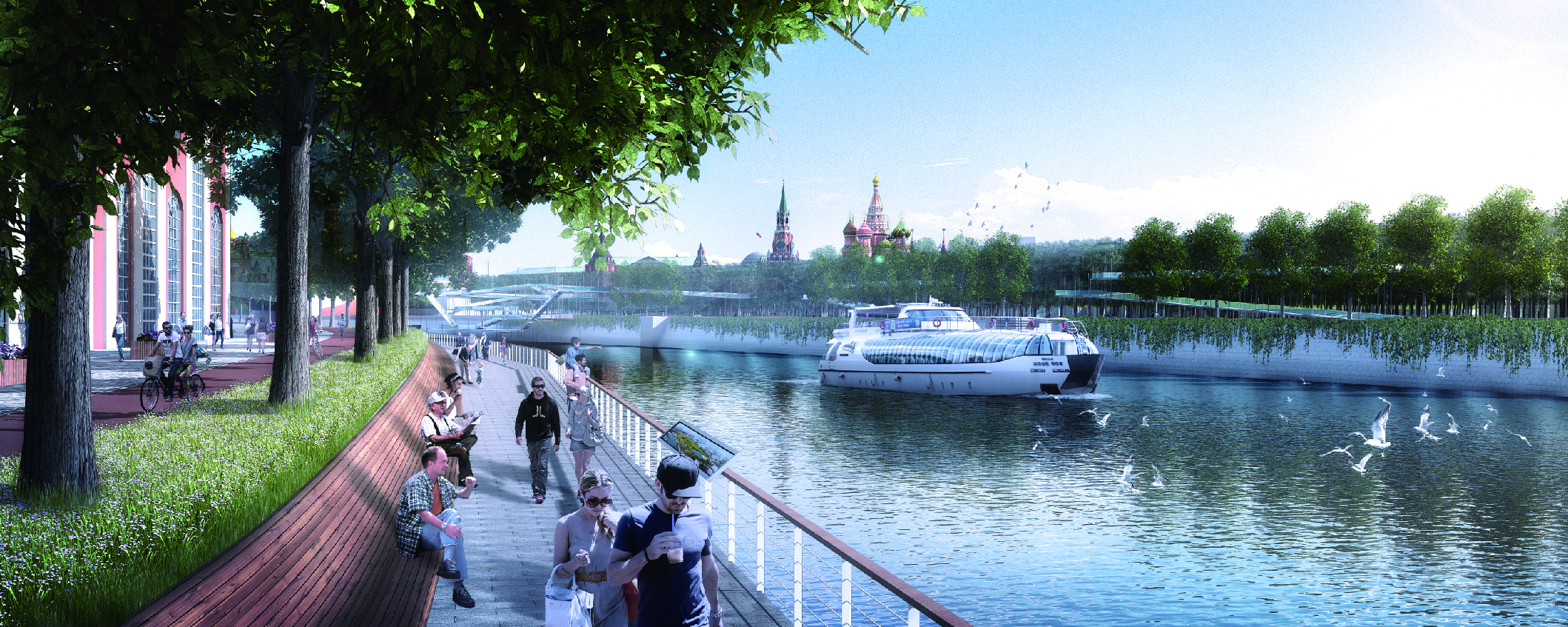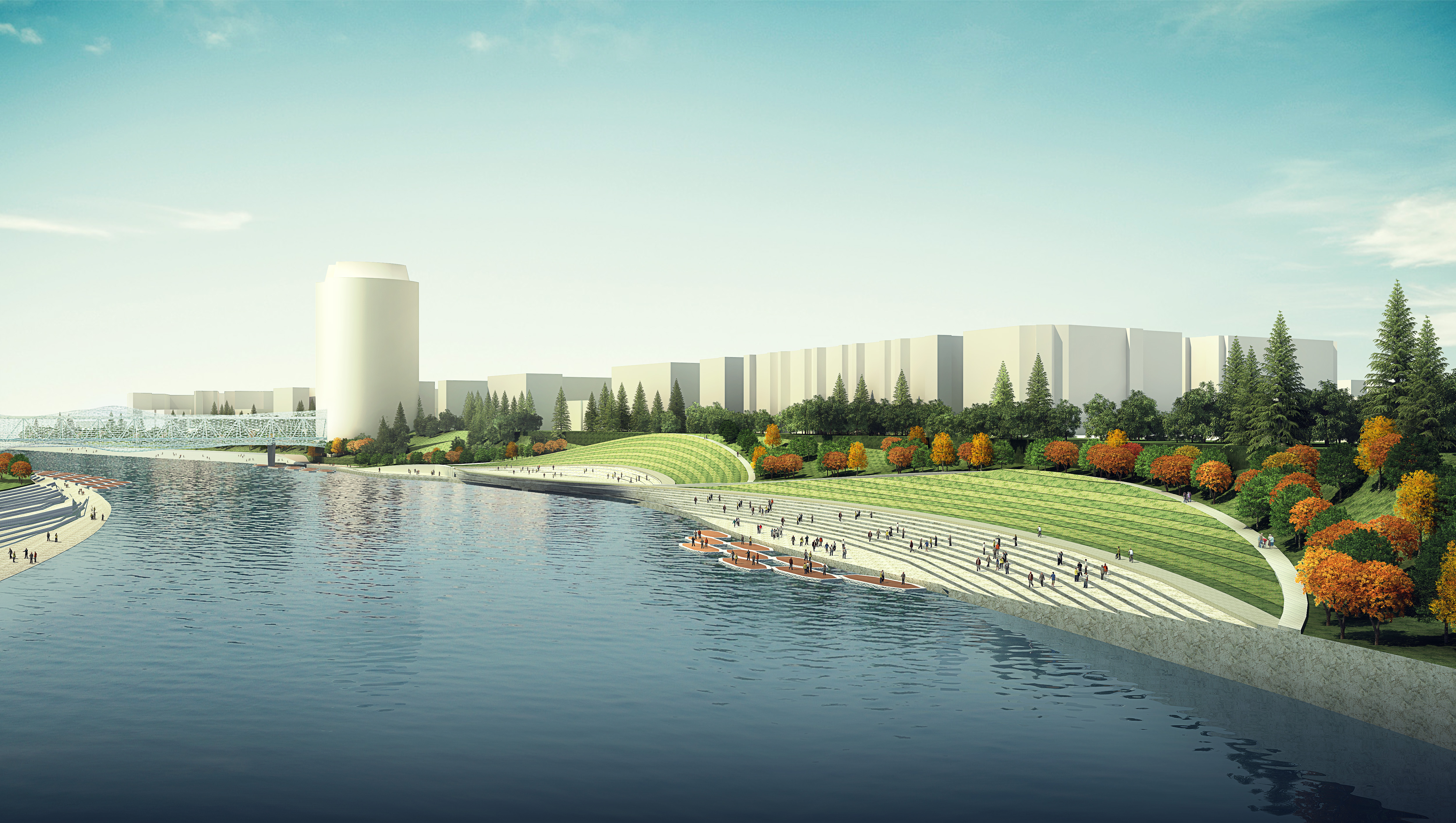Competition for the Concept or Urban Development of the Moscow River: The Finalists’ Projects

The competition finalists presented their projects at the IV Urban Forum Festival in Moscow. Moscow Chief Architect Sergey Kuznetsov and Chief Architect of the R&D Institute of the Moscow General Development Plan Andrei Gnezdilov reviewed the projects and pointed out their merits and flaws.
The aim of the contest was to reorganize the embankments in order to make them as accessible as possible as well as create a system of interconnected territories adjacent to the river that would turn the capital’s main waterway in the focal point of the urban infrastructure. The winning project was submitted by Russian architectural bureau Project Meganom.

A generalized image of a harbor served as the reference point for the project. Eye-catching cultural and recreational spaces on the waterfront make for magnets and “transportation gateways”, incorporated in a carefully designed system of pedestrian and transportation connections, cutting edge green solutions and city partnership programs. Each one of them marks a new development axis for Moscow.
The concept implies the creation of a green public space for communication and creativity, educational and cultural events. Public transit system infrastructure including metro, new bus and tram routes as well as river transport is also to be developed. According to Andrei Gnezdilov, the creation of focal points, or “ports” as they chose to call them, proved to be the winning solution for the team. “The general idea is that there are certain conditions present in those territories, in the city, in the waterway system, that can be used to embrace a new way of living for the city”, says Chief Architect of the NIiPI Genplana. Cleanliness of the river was another important part of the project. It is still undecided what methods will be chosen to maintain it. “The team is promoting the idea of using plants, but we’re not quite on board yet. We’ll have to work it out”, clarifies Andrei Gnezdilov.

TURENSCAPE INTERNATIONAL LIMITED
The project’s authors believe that infrastructure development plan should offer solutions to five issues most apparent in the city: ecosystem transformation, transport system reorientation, social balance adjustment, cultural renaissance and economic activity revival. The concept revolves around the so-called “life bights” that are meant to expand the river’s functionality and turn it into the centre of Moscow’s urban structure. The river is seen as the most important element of the city’s infrastructure, and environmental safety is considered to be the key condition for modernization.
As for the transportation at the adjacent territories, the aim of the project is to create a people-oriented transit system that would relieve the pressure on the automobile transport.
“We liked the concept right away, the project is very detailed from the point of view of the technical design specification. However, the concept’s focal point was the idea of water treatment, and although ecology is important for us, the project lacked in planning and integration ideas for the waterfront”, explained Sergey Kuznetsov.

The Spanish team’s project called “Liner Flowing Center” implies the creation of several zones, each of them providing all necessary services and amenities close to the residential houses. Every local centre will have at least one additional unique function, which will attract people from all parts of the city. Moscow River is offered to replace the city roads as the main artery for cargo transportation. As the new linear center develops, new transit hubs will further improve the city’s transport system by bringing together ground transportation, metro and parking lots.
“The idea of turning the river into a centre is good and bad at the same time”, notes Andrei Gnezdilov, “It’s very productive to focus on the river, but in my opinion the project lacks the close ties between the city and the river”.
“The city is set, and it’s hard to redraw it”, adds Sergey Kuznetsov, “However, it’s interesting that our Spanish colleagues drew our attention to the fact that the river is key to the city planning. Compact city is one of the most successful development concepts now, because the experience shows that it’s very hard to maintain a long linear system in terms of the upkeep of the communication networks and transport connections. Such system is inferior to the compact city”.

Among the main ideas of this project is that of transformation of the streets adjacent to the river, traffic lanes reduction, pedestrian and cycling lanes expansion, bridges’ renovation, and many more. The project’s authors also suggest that former industrial zones be used more efficiently, the Garden Ring transformed into a real green belt from a de facto grey one, the public transit developed, including river transport.
Sergey Kuznetsov: “It shows very clearly that this consortium is headed by a team whose forte is landscape design. Again, this is simultaneously a good thing and bad thing. As far as the design of the riverwalks is concerned, they did a great job. But when it comes to banning all cars from the waterfront and replacing them with pedestrian and cycling routes, the idea just seems too Utopian. More so, I find it astonishing that my colleagues suggested that residential houses be built in Stroginskaya floodplain. I believe that Muscovites would have been outraged if we chose this project”.

The project’s ideology: “River as a necklace of conceptual stretches”. The eco-region of the Moskvoretsky Park, Moscow City Business Centre, industrial zones in the southeast of the city — all of them are united by the river, which brings together the territories that are so vastly different. By planning a development strategy for the whole water system the team offers a treatment program for the Moscow River and the city’s ecology and an increase in the permeability of the urban environment. In essence, the city will eventually have a hundred rivers instead of one.
As for the river transport, the project suggests using river barges on routes connecting, for example, Khoroshevo-Mnevniki and Nagatino. The concept of territories’ transformation implies giving priority to pedestrian zones and ensuring that the riverbanks are easily accessible.
Despite the fact that the bureau’s project came in only fifth, the jury has praised the concept. “Our colleagues have thoroughly analyzed the Moscow River’s water system”, says Sergey Kuznetsov, “But some of their solutions were deemed too extravagant, like closing down the Filyovskaya metro line and opening Kotlovka’s riverbed. Such ideas are unrealistic right now”.
“I believe that the idea of regarding the hydrologic system as part of the landscape has a lot of potential. Working for the NIiPI Genplana, there is a trend to think about the Moscow River’s water system development not only in terms of recreational use”, explains Andrei Gnezdilov, “The idea is to enhance the minor rivers that could connect the centre to the outskirts of the city. Such green corridors are very appealing for developers, because real estate prices are higher for the properties located on the river”.

The main points of the project include densification of the road network and urban structure, development of local centers of gravity around rapid transit hubs, social integration of the local citizens, improvement of the economic climate, etc.
The project implies the creation in Moscow of a rapid transit system with effective capacity of 10-20 thousand passengers per hour. Public spaces under the bridges are to become transit hubs, as well as centers of cultural and social activity.
“The fact that so many competition participants turned to the transport function of the river indicates how bad the situation really is right now”, says Andrei Gnezdilov. “This particular team suggested a tram track be laid along the riverwalk. I don’t think it’s a good idea”.
Sergey Kuznetsov agrees: “This solution might not work for technical reasons, plus the cost of such a project would be astronomical”.
- Tags:
- competitions |
- Urban Design




